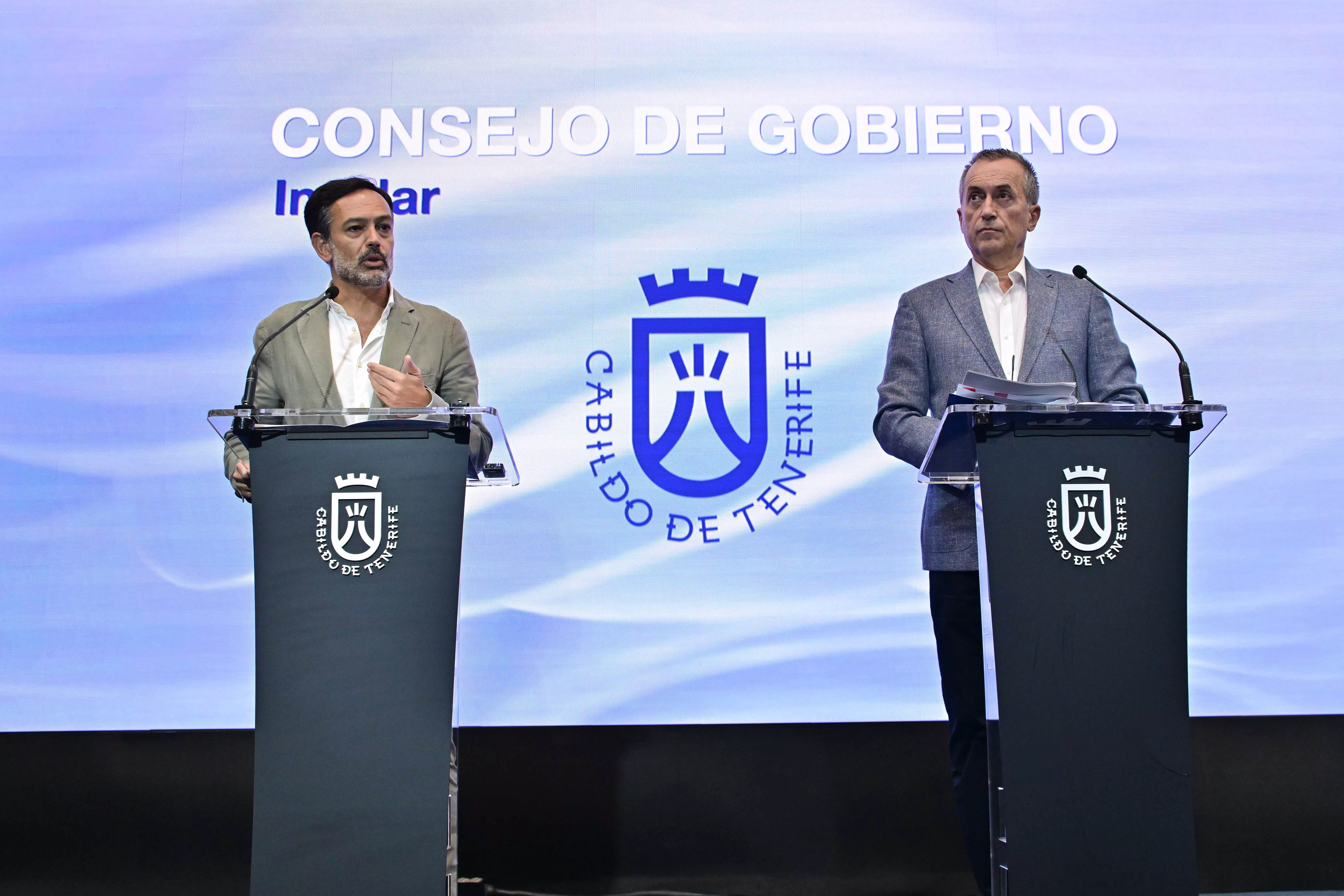November 23, such a day as tomorrow, of ago fifty years was inaugurated officially the Tenerife Fire Station, in the Santa Cruz Tomé Cano street. The historic building turns half a century in fair condition. Better than before the rehabilitation he has undergone due to his recurring structural problems. Place of work and life of those who have seen their dream come true as children: to serve society by facing fire. “We live here one day out of every three days, on average; there are frictions, but above it is the camaraderie », says Ibrahim Ben Mohamed Pérez, head of the Park and head of the Metropolitan Area of the Consortium for Prevention, Fire Fighting and Rescue of the Island. It depends on the Cabildo, it was created in 2000 “and it is the appropriate management model” he defends. The history of the Tenerife firefighters covers more stages and is closely related to this property.
Ibrahim entered the corps in 1991. He did it in Las Chafiras (San Miguel de Abona) and already in 1993 he reached Tomé Cano. Remember that “the last promotion was that of 86, of which there are two companions, Andrés and Jesús.” Walking around the building is to find the memories of hundreds of professionals who have passed through here in five decades. Most, he points out, “vocational”, although in his case he tried to be a professional military man.
Changes.
He did not see it, but he remembers what the veterans told us: “They told us about the Don Pelayo field, where the quarry games were played in the capital, which was opposite.” He emphasizes: “I do remember that there was nothing built where now there is practically no free space.” He acknowledges during the tour that “this has changed a lot.” A radical transformation. From a landscape of orchards and banana trees to being a reference in the area. Knowing where “the firefighters” are allows you to locate yourself. From barracks to park. It is appreciated by those who have been a firefighter for almost three decades: «A certain military ceremony was typical of the times. Line up in the courtyard, greet the officer or give news. Now, everything is different. From old material, such as the TF-O license plate trucks that Ibrahim knew, to modern equipment, such as the huge ladders that allow access at almost any height. From the bells with which the population was warned of the fire, to the unmistakable sound of today’s sirens. And from the Santa Cruz City Council to the Insular Consortium. He explains: «We firefighters had a municipal administrative concept and a lot of connection with the Local Police». “We are currently 71 professionals in shifts of 14 people and 24-hour guards, to fulfill the necessary services,” says Ibrahim. Quite a few more than the six in 1954, when the headquarters were on the street chicharrera Ruiz de Padrón.
History.
During the visit, you can see the activity of those who are on duty and prepare between small fire drills in the courtyard of this huge building, very close to Tres de Mayo Avenue and the popular neighborhood of La Victoria. Guessing that would be tricky in the photo shown by the Head of the Park. It corresponds to the construction of the late 60s of the last century. There are no warehouses, no tower inside, nor does the Tomé Cano school appear, practically attached today. The second floor houses many memories. Photographs, cups won in sports trophies – they always had a good football team – or old fire extinguishers with manual traction. The figure of the patron, Saint John of God, presides. The idea is to have a small museum and for that they collect recovered material. But the few restored vintage vehicles cannot be left out in the open. In this regard, he values: «We had one here for many years, at the door, but it ended up very deteriorated. A pending issue, somewhat alleviated when Ibrahim names historical figures who preceded him at the head of the park, such as Miguel Domínguez, in the 90s, Juan Amador or, above all, Salvador Reyes. The latter was his boss and friend. “It helped me a lot personally and professionally,” he sums up. Retired two years ago after 42 as a firefighter. Living history.
Incidents.
Every year the main incidents that he lists are repeated: “The typical cauldron on the fire, removing people trapped in elevators or opening doors.” On many occasions with personal misfortunes behind the threshold, “especially from people who lived alone.” Also suicides. But the worst moment was “without a doubt, the flood of March 31, 2002. For the eight fatalities, for the destruction and for the reconstruction. I was on duty that Holy Sunday and I did not return home until the following Thursday ». From the beginning he attended the La Palma volcano eruption and appreciated “a mesmerizing spectacle of nature and lofty destruction.”
“This (the report) must serve to demonstrate that a book or file is needed with all the historical data.” It is summarized by a consulted source. Not to mention the urban data, it was difficult to find dates: the first volunteer firefighters (1892), the first vehicle (1929), the first tank and the first staircase (1954) or the initial and profound reform of the workforce (1974). Small brushstrokes of an extensive history that deserves a space, both physical and figurative, because these modern firefighters have a past that the society they protect must and wants to know.
















